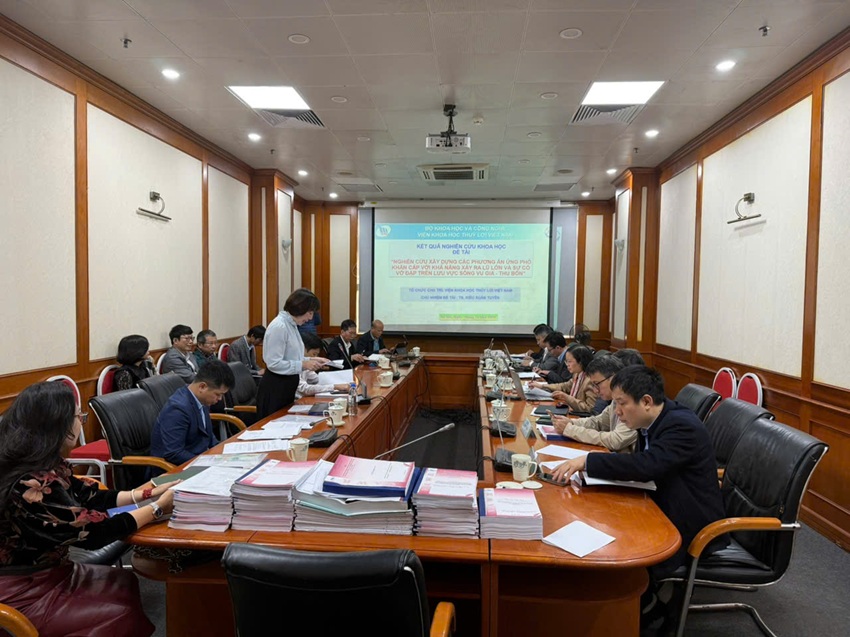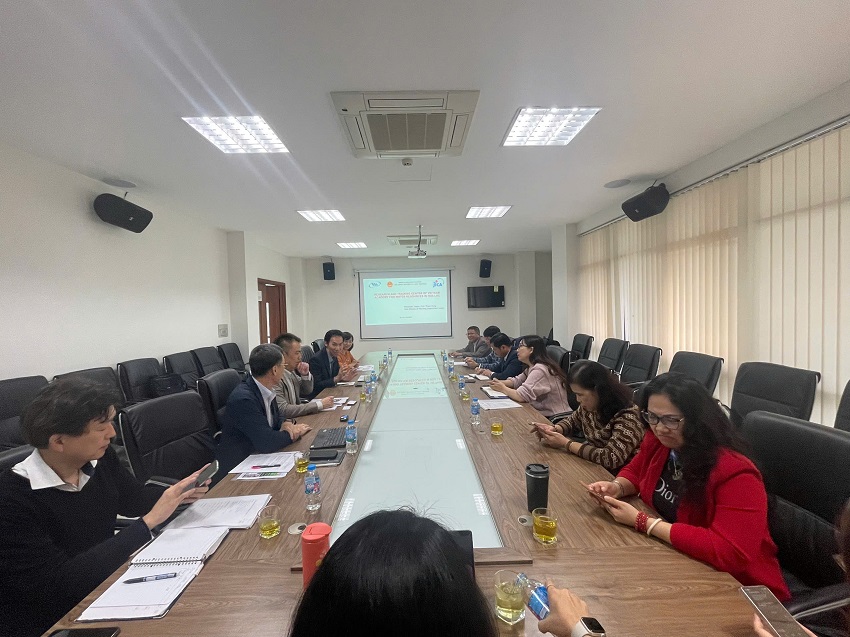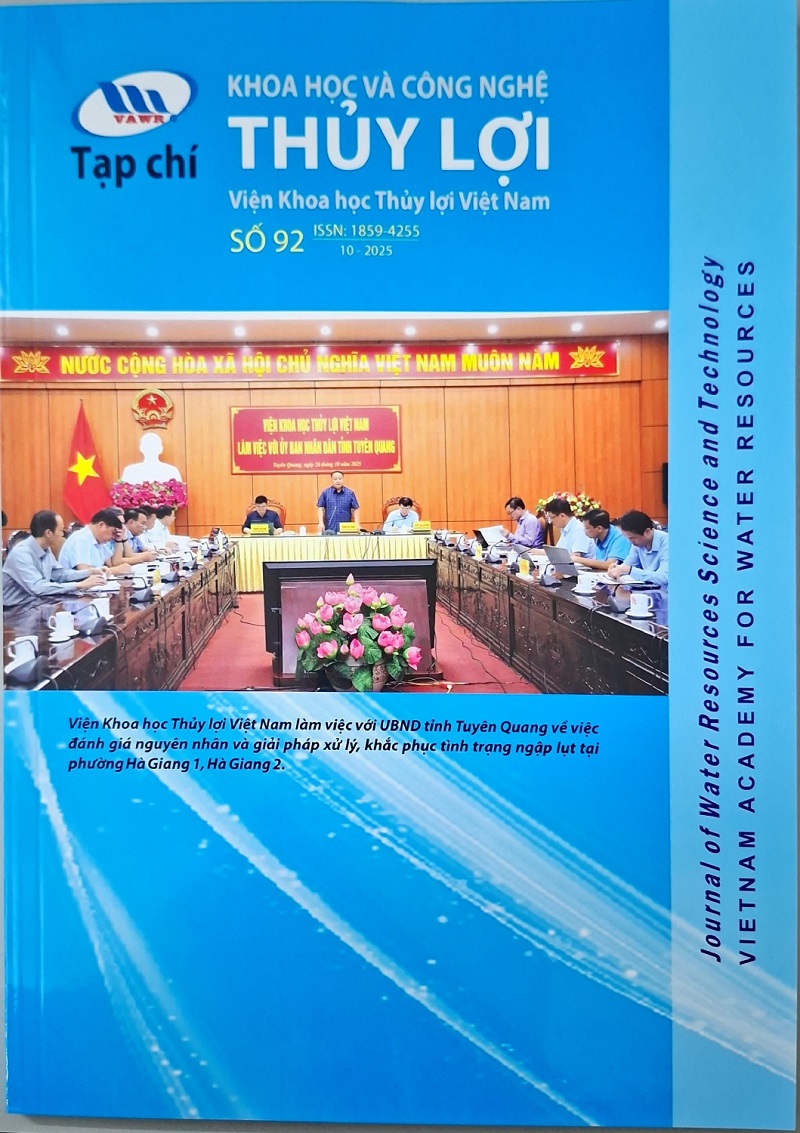Integrating global land-cover and soil datasets to update saturated hydraulic conductivity parameterization in hydrologic modeling
13/08/2021Soil properties play an important role in watershed hydrology and environmental modeling. In order to model realistic hydrologic processes, it is necessary to obtain compatible soil data. This study introduces a new method that integrates global soil databaseswith land use/land cover (LULC) databases to better represent saturated hydraulic conductivity (Ks) which is one of the most important soil properties in hydrologic modeling. The Ks is modified by means of uniting physical infiltration mechanismswith hydrologic soil-LULC complexes fromlookup tables from USDA-SCS (1985). This approach enables assimilation of available coarse resolution soil parameters by the finer resolution global LULC datasets. In order to test the performance of the proposed approach, it has been incorporated into theWatershed Environmental Hydrology (WEHY) model to simulate hydrologic conditions over the Cache Creek Watershed (CCW) and Shasta Dam Watershed (SDW) in Northern California by means of different soil datasets. Soil dataset S1 was obtained from the local soil database including SSURGO (Web soil survey, USDA). The second soil dataset (S2) is the global ISRIC soil data SoilGrids-1 km obtained from World Soil Information. Soil dataset S4 is global FAO soil data. The third (S3) and fifth (S5) soil datasets were calculated by integrating the LULC into global soil datasets (S2, S4), respectively. The results of this study suggest that the proposed approach can provide a fine resolution soil dataset through integration of LULC and soil data, which can improve the estimation of soil hydraulic parameters and the performance of hydrologic modeling over the target watersheds. Within this framework, the new approach of this study can be applied widely in many parts of the world by means of the global soil and LULC databases.
1. Introduction
2. Methodology
2.1. Integration of LULC data and soil data
2.2. Hydrologic model
3. Application
3.1. Description of the watersheds of interest
3.2. Integration of LULC and soil data
3.3. Implementation of physically-based WEHY model to the target watersheds
3.4. Stream flow results and discussion
4. Summary and conclusion
References
Batjes, N.H., 1997. A world dataset of derived soil properties by FAO–UNESCO soil unit for global modelling. Soil Use Manag. 13 (1), 9–16.
Bormann, H., Klaassen, K., 2008. Seasonal and land use dependent variability of soil hydraulic and soil hydrological properties of two Northern German soils. Geoderma 145 (3), 295–302.
Bronstert, A., Niehoff, D., Bürger, G., 2002. Effects of climate and land-use change on storm runoff generation: present knowledge and modelling capabilities. Hydrol. Process. 16 (2), 509–529.
Chen, Z., Kavvas,M., Fukami, K., Yoshitani, J.,Matsuura, T., 2004a. Watershed environmental hydrology (WEHY) model: model application. J. Hydrol. Eng. 9 (6), 480–490.
Chen, Z., et al., 2004b. Geomorphologic and soil hydraulic parameters forWatershed Environmental Hydrology (WEHY) model. J. Hydrol. Eng. 9 (6), 465–479.
Chen, Z.R., Kavvas, M., Ohara, N., Anderson, M., Yoon, J., 2011. Coupled regional hydroclimate model and its application to the Tigris-Euphrates basin. J. Hydrol. Eng. 16 (12), 1059–1070.
Chong, S.-K., Teng, T.-M., 1986. Relationship between the runoff curve number and hydrologic soil properties. J. Hydrol. 84, 1): 1–7.
Christianson, R.D., Hutchinson, S.L., Brown, G.O., 2015. Curve number estimation accuracy on disturbed and undisturbed soils. J. Hydrol. Eng. 21 (2), 04015059.
De Paola, F., Ranucci, A., 2012. Analysis of spatial variability for stormwater capture tank assessment. Irrig. Drain. 61 (5), 682–690.
De Paola, F., Ranucci, A., Feo, A., 2013. Antecedent moisture condition (SCS) frequency assessment a case study in southern Italy. Irrig. Drain. 62, 61–71.
Dunjó, G., Pardini, G., Gispert, M., 2004. The role of land use–land cover on runoff generation and sediment yield at a microplot scale, in a small Mediterranean catchment. J. Arid Environ. 57 (2), 239–256.
Fu, B., Chen, L., Ma, K., Zhou, H., Wang, J., 2000. The relationships between land use and soil conditions in the hilly area of the loess plateau in northern Shaanxi, China. Catena 39 (1), 69–78.
Gesch, D.B., 2007. The national elevation dataset. Digital elevation model technologies and applications: The DEM user’s manual. In: Maune, D. (Ed.), American Society for Photogrammetry and Remote Sensing, 2nd Ed. Bethesda, MD, pp. 99–118.
Gesch, D., Evans, G., Mauck, J., Hutchinson, J., Carswell Jr., W.J., 2009. The national map: elevation. US Geol. Surv. Fact Sheet 3053 (4).
Gonzalez-Sosa, E., et al., 2010. Impact of land use on the hydraulic properties of the topsoil in a small French catchment. Hydrol. Process. 24 (17), 2382–2399.
Kavvas, M., et al., 2004. Watershed environmental hydrology (WEHY) model based on upscaled conservation equations: hydrologic module. J. Hydrol. Eng. 9 (6), 450–464.
Kavvas,M., et al., 2006. Watershed environmental hydrologymodel: environmental module and its application to a California watershed. J. Hydrol. Eng. 11 (3), 261–272.
Kavvas, M., Kure, S., Chen, Z., Ohara, N., Jang, S., 2012. WEHY-HCM for modeling interactive atmospheric-hydrologic processes at watershed scale. I: model description. J. Hydrol. Eng. 18 (10), 1262–1271.
Kure, S., Jang, S., Ohara, N., Kavvas, M., Chen, Z., 2012. WEHY-HCM for modeling interactive atmospheric-hydrologic processes at watershed scale. II: model application to ungauged and sparsely gauged watersheds. J. Hydrol. Eng. 18 (10), 1272–1281.
Logan, T., Lal, R., Dick,W., 1991. Tillage systems and soil properties in North America. Soil Tillage Res. 20 (2), 241–270.
Ohara, N., et al., 2010. Role of snowin runoff processes in a subalpine hillslope: field study in the Ward Creek Watershed, Lake Tahoe, California, during 2000 and 2001 water years. J. Hydrol. Eng. 16 (6), 521–533.
Parker, C., Chartres, C., 1983. The effects of recent land use changes on red podzolic soils near Sydney, NSW, Australia. Catena 10 (1), 61–76.
Reiners, W.A., Bouwman, A., Parsons, W., Keller, M., 1994. Tropical rain forest conversion to pasture: changes in vegetation and soil properties. Ecol. Appl. 4 (2), 363–377.
Reybold, W.U., TeSelle, G.W., 1989. Soil geographic data bases. J. Soil Water Conserv. 44 (1), 28–29.
Shangguan,W., Dai, Y., Duan, Q., Liu, B., Yuan, H., 2014. A global soil data set for earth system modeling. J. Adv. Model. Earth Syst. 6 (1), 249–263.
Trinh, T., et al., 2016a. New methodology to develop future flood frequency under changing climate by means of physically based numerical atmospheric-hydrologic modeling. J. Hydrol. Eng. 21 (4), 04016001.
Trinh, T., et al., 2016b. Reconstruction of historical inflows into and water supply from Shasta dam by coupling physically based hydroclimate model with reservoir operation model. J. Hydrol. Eng., 04016029.
USDA-SCS, 1985. National Engineering Handbook, Section 4: Hydrology. US Soil Conservation Service, USDA, Washington, DC.
US-NRCS, 1995. Soil Survey Geographic (SSURGO) Data Base: Data Use Information. National Cartography and GIS Center.
Webb, R.S., Rosenzweig, C.E., Levine, E.R., 1991. A Global Data Set of Soil Particle Size Properties. NASA Tech. Memo, TM-4286 (40 pp.).
Yoshitani, J., Chen, Z., Kavvas, M., Fukami, K., 2009. Atmospheric model-based streamflow forecasting at small,mountainous watersheds by a distributed hydrologic model: application to a watershed in Japan. J. Hydrol. Eng. 14 (10), 1107–1118.
Zhu, A.X., Hudson, B., Burt, J., Lubich, K., Simonson, D., 2001. Soil mapping using GIS, expert knowledge, and fuzzy logic. Soil Sci. Soc. Am. J. 65 (5), 1463–1472.
Zobler, L., 1987. A world soil hydrology file for global climate modeling. International Geographic Information Systems Symposium. The Research Agenda, November 15–18, 1987, Arlington, Virginia, Proceedi. vol. 1, pp. 229–244.
See detail: Published_Integrating global land-cover (ISI 2018 - Science of the Total Environment)
T. Trinh a,g,⁎, M.L. Kavvas a, K. Ishida b, A. Ercan c, Z.Q. Chen d, M.L. Anderson d, C. Ho e, T. Nguyen f
a Hydrologic Research Laboratory, Dept. of Civil and Environmental Engineering, Univ. of California, Davis, CA, United States
b Department of Civil and Environmental Engineering, Kumamoto University, Kumamoto, Japan
c J. Amorocho Hydraulics Laboratory, Dept. of Civil and Environmental Engineering, Univ. of California, Davis, CA, United States
d California Department of Water Resources, Sacramento, CA, United States
e The Key Laboratory of River and Coastal Engineering, Viet Nam
f Faculty of Civil Engineering, Thuy loi University, Viet Nam
g Faculty of Hydrology and Water Resources, Thuy loi University, Viet Nam
Science of the Total Environment 631–632 (2018) 279–288
Ý kiến góp ý:









